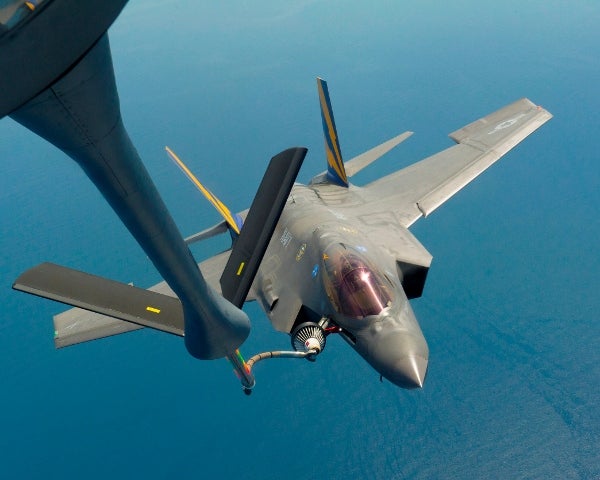
The US Navy’s F-35C Lightning II joint strike fighter (JSF) carrier variant (CV) aircraft has successfully conducted the first in-flight refuelling trials with a US Air Force’s (USAF) KC-135 aircraft at an undisclosed location.
During the testing, the aircraft, also known as CF-1, successfully refuelled with a USAF’s Boeing KC-135 Stratotanker aircraft.
After completing this testing, the aircraft now joins the A and B models in proving that all three variants of the F-35 are capable of refuelling from a common tanker platform, despite their different methods.
The US Navy’s first F-35C Lightning II carrier variant aircraft squadron, the Strike Fighter Squadron (VFA) 101 completed the F-35C first flight test at Eglin Air Force Base in Florida, US.
Scheduled to achieve initial operational capability in 2019, the F-35C catapult-assisted takeoff barrier arrested recovery (CATOBAR) aircraft features advanced stealth technology with fighter speed and agility, fully fused sensor information, network-enabled operations and advanced sustainment.
The aircraft is also being developed in two other variants, conventional takeoff and landing (CTOL) variant for the US Air Force, and a short takeoff and vertical landing (STOVL) aircraft for the US Marine Corps and UK Royal Navy.
Powered by a single Pratt and Whitney F135 turbofan engine, the F-35C can fly at a maximum speed of 1,960km/h and can be launched through a steam catapult and recovered by using a tailhook arrestor.
The F-35C stealth bomber aircraft will complement the US Navy’s currently operational Boeing F/A-18E/F Super Hornet strike fighter, by providing enhanced flexibility, power projection and strike capabilities.
VFA 101 will train aircrew and maintenance personnel to operate and repair the F-35C aircraft for the US Navy.
Image: US Navy’s F-35C aircraft performing in-flight refuelling task. Photo: courtesy of Lockheed Martin.





